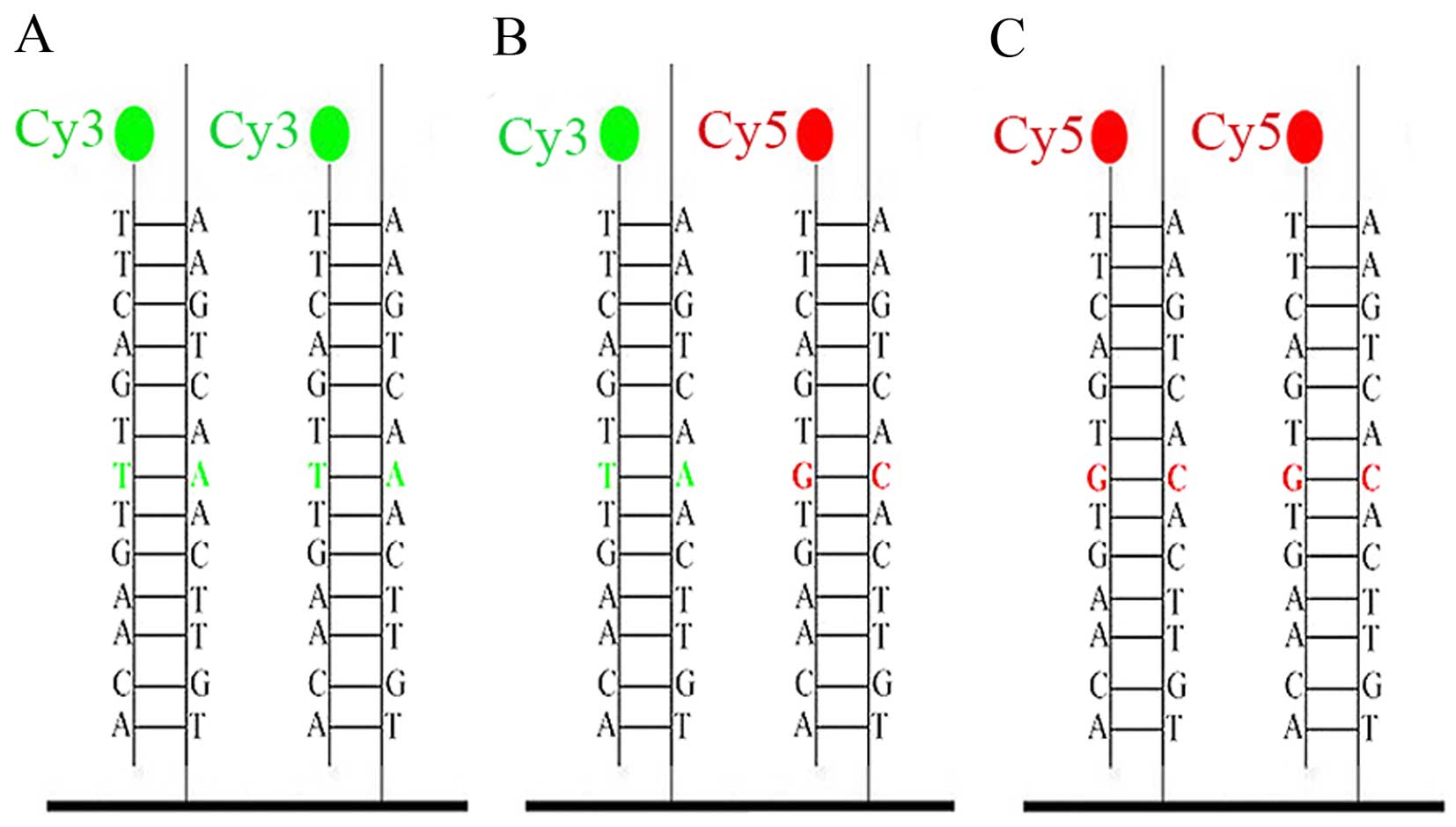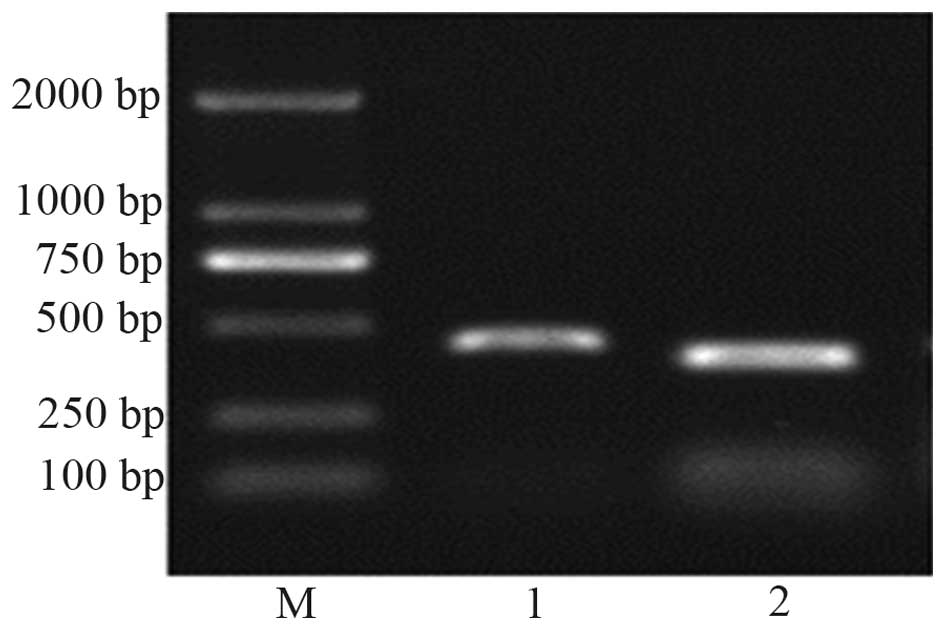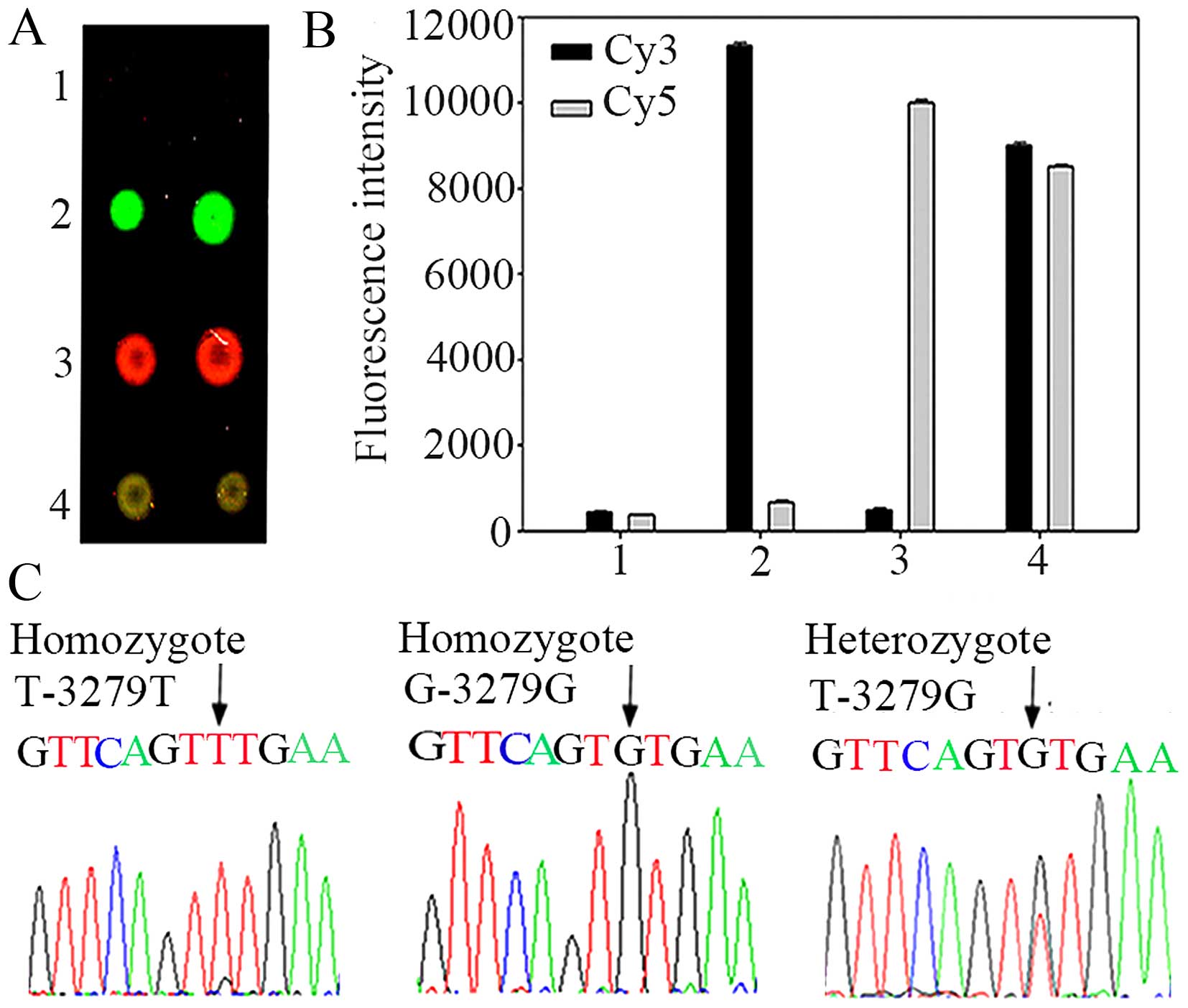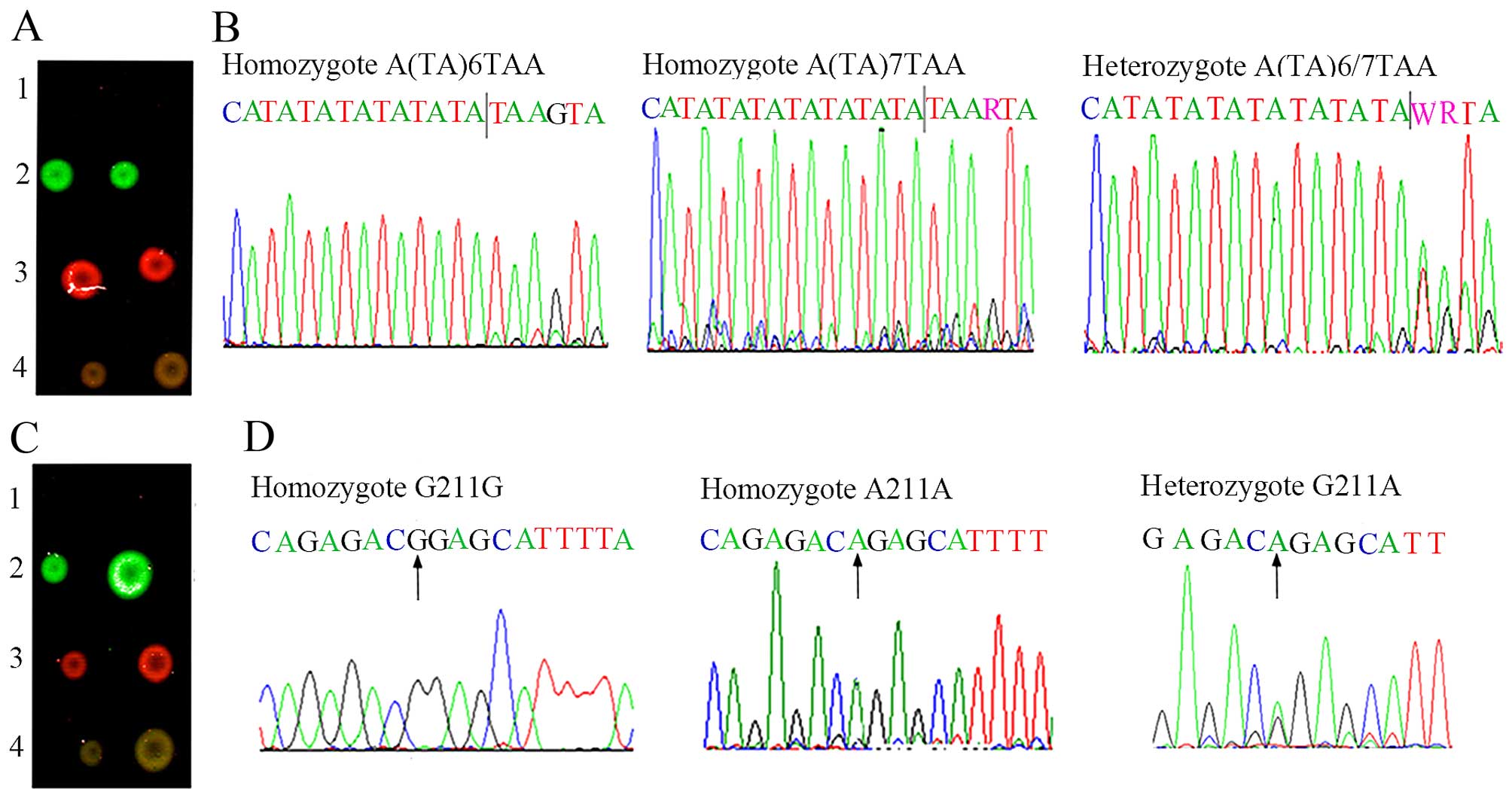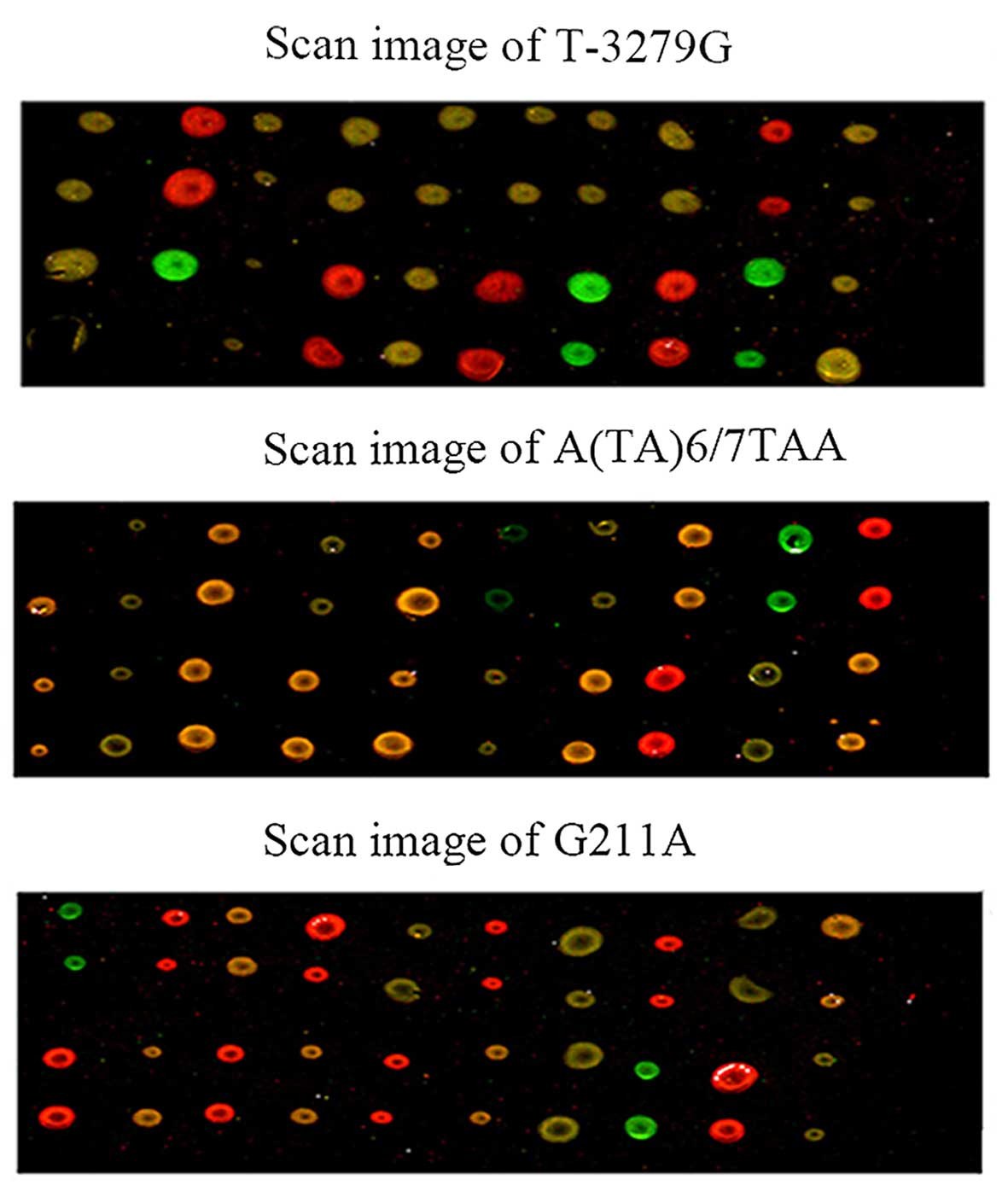|
1
|
Fretzayas A, Moustaki M, Liapi O and
Karpathios T: Gilbert syndrome. Eur J Pediatr. 171:11–15. 2012.
View Article : Google Scholar
|
|
2
|
Teich N, Lehmann I, Rosendahl J, Tröltzsch
M, Mössner J and Schiefke I: The inverse starving test is not a
suitable provocation test for Gilbert's syndrome. BMC Res Notes.
1:352008. View Article : Google Scholar : PubMed/NCBI
|
|
3
|
Bosma PJ, Seppen J, Goldhoorn B, Bakker C,
Oude Elferink RP, Chowdhury JR, Chowdhury NR and Jansen PL:
Bilirubin UDP-glucuronosyltransferase 1 is the only relevant
bilirubin glucuronidating isoform in man. J Biol Chem.
269:17960–17964. 1994.PubMed/NCBI
|
|
4
|
Bosma PJ, Chowdhury JR, Bakker C, Gantla
S, de Boer A, Oostra BA, Lindhout D, Tytgat GN, Jansen PL, Oude
Elferink RP, et al: The genetic basis of the reduced expression of
bilirubin UDP-glucuronosyltransferase 1 in Gilbert's syndrome. N
Engl J Med. 333:1171–1175. 1995. View Article : Google Scholar : PubMed/NCBI
|
|
5
|
Raijmakers MT, Jansen PL, Steegers EA and
Peters WH: Association of human liver bilirubin
UDP-glucuronyltransferase activity with a polymorphism in the
promoter region of the UGT1A1 gene. J Hepatol. 33:348–351. 2000.
View Article : Google Scholar : PubMed/NCBI
|
|
6
|
Sato H, Adachi Y and Koiwai O: The genetic
basis of Gilbert's syndrome. Lancet. 34:557–558. 1996. View Article : Google Scholar
|
|
7
|
Sugatani J, Yamakawa K, Yoshinari K,
Machida T, Takagi H, Mori M, Kakizaki S, Sueyoshi T, Negishi M and
Miwa M: Identification of a defect in the UGT1A1 gene promoter and
its association with hyperbilirubinemia. Biochem Biophys Res
Commun. 292:492–497. 2002. View Article : Google Scholar : PubMed/NCBI
|
|
8
|
Maruo Y, Sato H, Yamano T, Doida Y and
Shimada M: Gilbert syndrome caused by a homozygous missense
mutation (Tyr486Asp) of bilirubin UDP-glucuronosyltransferase gene.
J Pediatr. 132:1045–1047. 1998. View Article : Google Scholar : PubMed/NCBI
|
|
9
|
Maruo Y, Nishizawa K, Sato H, Doida Y and
Shimada M: Association of neonatal hyperbilirubinemia with
bilirubin UDP-glucuronosyltransferase polymorphism. Pediatrics.
103:1224–1227. 1999. View Article : Google Scholar : PubMed/NCBI
|
|
10
|
Canu G, Minucci A, Zuppi C and Capoluongo
E: Gilbert and Crigler Najjar syndromes: An update of the
UDP-glucuronosyltransferase1A1 (UGT1A1) gene mutation database.
Blood Cells Mol Dis. 50:273–280. 2013. View Article : Google Scholar : PubMed/NCBI
|
|
11
|
Maruo Y, D'Addario C, Mori A, Iwai M,
Takahashi H, Sato H and Takeuchi Y: Two linked polymorphic
mutations (A(TA)7TAA and T-3279G) of UGT1A1 as the principal cause
of Gilbert syndrome. Hum Genet. 115:525–526. 2004. View Article : Google Scholar : PubMed/NCBI
|
|
12
|
Matsui K, Maruo Y, Sato H and Takeuchi Y:
Combined effect of regulatory polymorphisms on transcription of
UGT1A1 as a cause of Gilbert syndrome. BMC Gastroenterol.
10:572010. View Article : Google Scholar : PubMed/NCBI
|
|
13
|
Kalotychou V, Karakosta M, Tzanetea R,
Stamoulakatou A, Konstantopoulos K and Rombos Y: Contribution of
G71R mutation to Gilbert's syndrome phenotype in a Greek patient: a
case report. World J Gastrointest Pharmacol Ther. 2:42–45. 2011.
View Article : Google Scholar : PubMed/NCBI
|
|
14
|
Xiao PF, Cheng L, Wan Y, Sun BL, Chen ZZ,
Zhang SY, Zhang CZ, Zhou GH and Lu ZH: An improved gel-based DNA
microarray method for detecting single nucleotide mismatch.
Electrophoresis. 27:3904–3915. 2006. View Article : Google Scholar : PubMed/NCBI
|
|
15
|
Rehman FN, Audeh M, Abrams ES, Hammond PW,
Kenney M and Boles TC: Immobilization of acrylamide-modified
oligonu-cleotides by co-polymerization. Nucleic Acids Res.
27:649–655. 1999. View Article : Google Scholar
|
|
16
|
Kim YH, Yeon JE, Jung GM, Kim HJ, Kim JS,
Byun KS, Bak YT and Lee CH: A study of polymorphism in
UDP-glucuronosyltransferase 1 (UGT-1A1) promoter gene in Korean
patients with Gilbert's syndrome. Taehan Kan Hakhoe Chi. 8:132–138.
2002.In Korean. PubMed/NCBI
|
|
17
|
Tukey RH and Strassburg CP: Human
UDP-glucurono-syltransferases: Metabolism, expression, and disease.
Annu Rev Pharmacol Toxicol. 40:581–616. 2000. View Article : Google Scholar
|
|
18
|
Minucci A, Concolino P, Giardina B, Zuppi
C and Capoluongo E: Rapid UGT1A1 (TA)(n) genotyping by high
resolution melting curve analysis for Gilbert's syndrome diagnosis.
Clin Chim Acta. 411:246–249. 2010. View Article : Google Scholar
|
|
19
|
Wong FL, Wang MK, Boo NY, Hamidah NH and
Ainoon BO: Rapid detection of the UGT1A1 single nucleotide
polymorphism G211A using real-time PCR with Taqman minor groove
binder probes. J Clin Lab Anal. 21:167–172. 2007. View Article : Google Scholar : PubMed/NCBI
|
|
20
|
Hsieh TY, Shiu TY, Chu NF, Chao TY, Chu
HC, Chang WK, Chao YC and Huang HH: Rapid molecular diagnosis of
the Gilbert's syndrome-associated exon 1 mutation within the UGT1A1
gene. Genet Mol Res. 13:670–679. 2014. View Article : Google Scholar : PubMed/NCBI
|
|
21
|
Shiu TY, Huang HH, Lin HH, Shih YL, Chu
HC, Chang WK and Hsieh TY: Restriction fragment length polymorphism
effectively identifies exon 1 mutation of UGT1A1 gene in patients
with Gilbert's syndrome. Liver Int. 35:2050–2056. 2015. View Article : Google Scholar : PubMed/NCBI
|
|
22
|
Cheng L, Ge Q, Xiao P, Sun B, Ke X, Bai Y
and Lu Z: Association study between BDNF gene polymorphisms and
autism by three-dimensional gel-based microarray. Int J Mol Sci.
10:2487–2500. 2009. View Article : Google Scholar : PubMed/NCBI
|
|
23
|
Tang J and Xiao P: Polymerizing
immobilization of acrylamide-modified nucleic acids and its
application. Biosens Bioelectron. 24:1817–1824. 2009. View Article : Google Scholar
|



